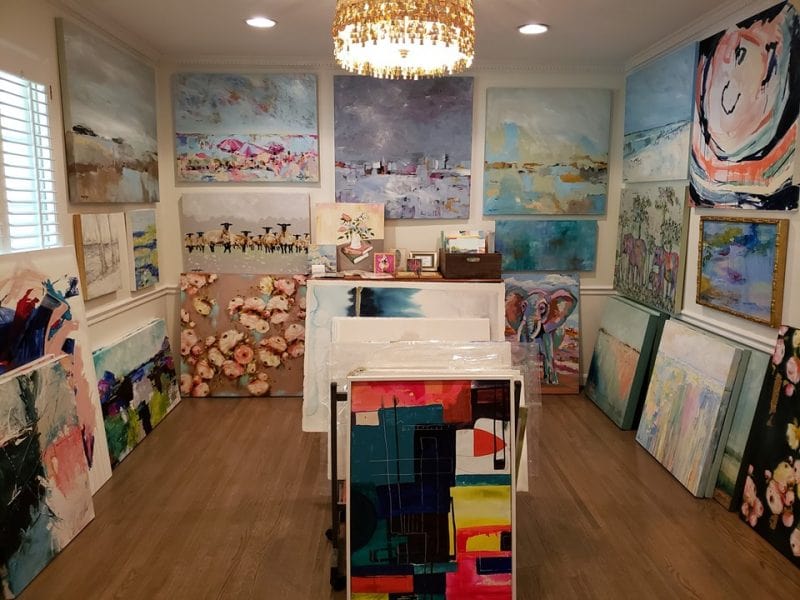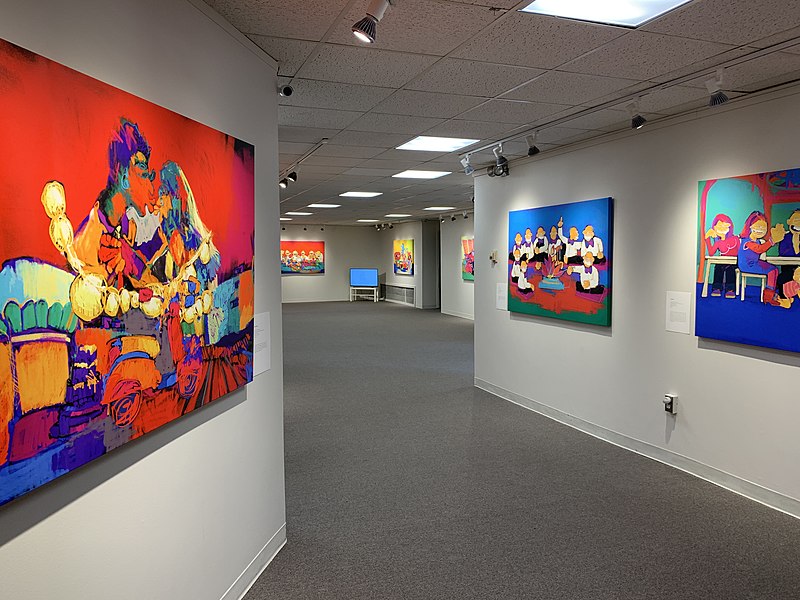
Contemporary painting is a variety of works that attract attention with their unusual appearance, but also often cause a lot of problems in interpretation. How should we read contemporary painting?
We encounter art every day, often without even realizing it. We often do not devote too much time to its contemplation. However, contemporary art has many meanings that are both immediately readable and require deeper reflection.
What exactly is meant by contemporary art and contemporary painting? Where can one encounter art of this kind most often? What should we pay attention to in its reception?
What is contemporary art and contemporary painting?
Contemporary art is defined as the current period in art history. Its beginning has been contractually set for the middle of the 20th century – after the end of World War II. Within the framework of contemporary art, no temporal divisions have yet been determined. This is also partly due to its complex nature – many artistic manifestations, intertwining trends.
The emergence of contemporary art is also connected with a change in the perception of artists and their activities. An artist is no longer treated only as a craftsman whose task is to create attractive decorations, but is also someone who expresses himself and interprets the world through it.
Today’s art is art for art’s sake – it no longer plays such a servant role as in the past. It has also allowed artists to become independent from market conditions and thus to express themselves freely.
Contemporary works of art do not, however, remain in the background. They often take up topics related to the surrounding world and its threats and opportunities.
Contemporary art uses a number of different means, which are not limited to painting or sculpture, which are most often associated with early art.
Contemporary art and its manifestations:
- manifesto – treated as a public declaration on a given matter
- installation – consisting of many elements artistic realization, which is most often adjusted to the space in which it is located
- happening – organized artistic event
- performance – an artistic situation that concerns the performer’s body
- collage – a technique involving the creation of compositions from various materials, for example newspaper clippings, photographs, small objects
- photomontage – a photographic image that is a combination of many photographs
Thus, contemporary art is a very broad term, which is not limited to traditional works alone. However, let us focus on painting, because it is still the most common message also in contemporary art.
Contemporary painting versus old painting
When we compare images today and once, we can see a significant difference. It is no longer the same art that we could have encountered in the past. However, it does not mean that it has a lower value – you can also see it from many contemporary art auctions.

Old painting played a more servant role. It focused on themes related to religion, history, portrayed important personalities, but also everyday situations. The old works were focused on faithful representation of reality in order to present the artist’s artistry in this way.
It is this painting that many consider to be the peak of human potential. Fine, delightful, reflecting the world as it was. Against this background, contemporary painting may seem to be something hardly understandable. Contemporary painting works completely break old patterns. Artists more and more often look for new ways to express their ideas, experiment, apply new techniques.
Contemporary painting therefore includes a number of different directions:
- abstractionism – it completely departs from the realistic representation of the environment, we distinguish between geometric abstractionism, which emphasizes geometric forms, and non-geometric abstractionism, in which paintings are far from ordered geometric forms, for example informel
- abstract expressionism – uses the subconscious creative act to express
- action painting – abstract gesture painting, which belongs to abstract expressionism, consists in creating works by dripping paint on the ground
- color field painting – painting of colorful surfaces that emphasizes color,
- dadaism – an artistic movement that postulates freedom of artistic expression
- cubism – a direction in painting developed in France, which rejects the rules of perspective and puts emphasis on geometric simplification of composition
- hyper-realism – in these works the emphasis is on the photographic precision of the work, its starting point is usually a photo
- pop art – a field of art which is based on contemporary objects of common use and mass culture
- op art – these works use optical illusions, for example
- painting of matter – uses different types of matter, for example rocks, sand, gypsum, which are treated properly, similar to collage
Certainly, the above presented directions in contemporary art, namely in contemporary painting, do not exhaust. It is worth remembering that contemporary art is diverse, constantly developing and changing.
How to read contemporary painting?
Since contemporary painting is significantly different from that of centuries ago, many people have difficulties with its interpretation. A work in which we cannot even distinguish the main theme, unless it is given by the artist, can cause a headache to anyone who would like to discover what is really behind it.
Contemporary painting can be quite easy to read when it has some leitmotif, for example, it presents some place or situation. Even if the artist did not take care of their exact representation, the observer of the painting may find out what he really wanted to present on it.
The staircase often starts at the moment of contact with more abstract paintings, in which it is in vain to look for a point of attachment similar to that of old painting.
In contemporary painting, the viewer should first of all realize that there are no interpretations that are true and misleading, better and worse. This is also due to the very specificity of contemporary art, which gives great freedom to the artist himself.
Contemporary works of art are created not only to convey certain information to the viewer, but also to simply enjoy the eye, to make him think about the world, himself, others.
Therefore, these works do not carry the obligation to interpret them according to the artist’s expectations. Each of their recipients, regardless of whether they have knowledge and experience in the field of art history, or whether they come into contact with it only for the first time, can create their own interpretations and each of them has equal value.
How to become an owner of contemporary painting works?
Currently, contemporary painting is at your fingertips – not only via the Internet, where you can admire the works foreign painters on the screen of computers and mobile devices, but also in art galleries, where you can meet them live.
You can also become the owner of a contemporary work of art yourself – one that can be an interesting decoration at the same time, will give satisfaction from watching and will suit your taste, and at the same time it can become a future-oriented form of investing money.





